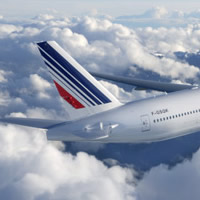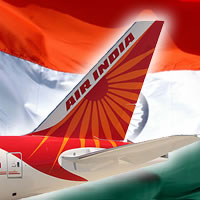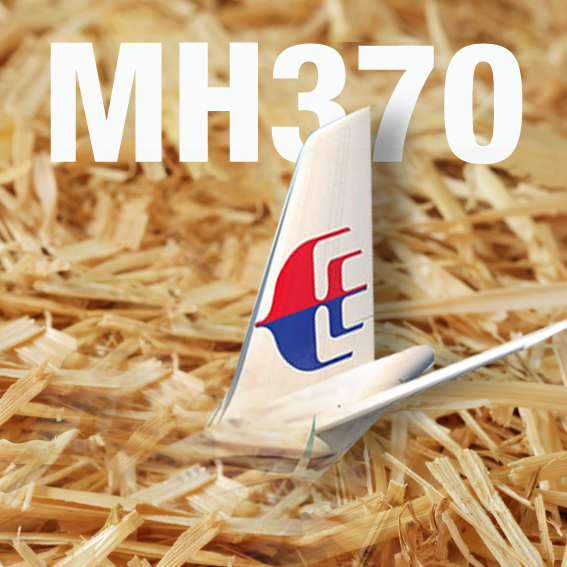Tweet What we now know, is that Air France Flight 447 went down in a giant and dangerous storm that might not have been survivable under any circumstances. But storms alone are not usually the sole causes of accidents. As the Airbus A-330 penetrated that huge system of thunderstorms, sensors, systems and computers on the […]
What we now know, is that Air France Flight 447 went down in a giant and dangerous storm that might not have been survivable under any circumstances. But storms alone are not usually the sole causes of accidents. As the Airbus A-330 penetrated that huge system of thunderstorms, sensors, systems and computers on the aircraft started failing in a rapid sequence of events that would be a nightmare even in the best of weather conditions during daylight, but as it were, the pilot was virtually flying blind in the night.
These failures most likely sealed the fate of Flight 447, but were there other factors that contributed the demise of those the 228 persons on board? Remember, an accident occurs at the end of long chain of unrelated, seemingly innocuous decisions, malfunctions, mistakes and external factors. Remove any single link (or even change their sequence) and the aircraft would have reached it’s destination, and I’d be writing about something else. So how do those system failures fit in the chain of calamity?
The Airbus line of aircraft was designed to shift the workload from pilots to computers – because humans make mistakes and machines do not - and the A-330 instrument panel is proof they did an excellent job of it. Not to diminish the profession, but the pilots are there to watch the computers fly the airplane since it is electrical wires that transmit the pilot’s commands to hydraulic actuators that move the control surfaces. Between the pilot and those surfaces are a bank of computers that are actually flying the plane. The computers are programmed with some strict rules (in fact, Airbus calls them “Laws”) designed to assess the human commands from the flight deck – and veto them if they would put the plane in harm’s way. Point the nose too high or too low – or bank to steeply and the computer will correct the bad airmanship.
What happens when the computers fail? Before Air France 447 went down, it transmitted a series of text data reporting failures and warnings via its Aircraft Communications Addressing and Reporting System (ACARS). What really happened will only be known if the aircraft’s black box is found, but we do know that the autopilot disengaged, the flight control computer failed, warnings appeared on the flight data screens used by the pilots and the rudder moved beyond its limits.
There is speculation that the pitot tube (the device that measures the relative pressure of air as it flows in) may have failed, thus giving incorrect information. Information on airspeed is crucial to the pilots. If you don’t know your airspeed, you can easily stall or overspeed the plane.
Pitot tubes tend to be ice collectors on an airplane flying through precipitation. If they glaze over, or get clogged with crystals, they won’t work. Flying through a thunderstorm is the equivalent of flying through a huge ice-generating machine that can overwhelmed the best pitot tubes made by man.
In 2008, Air Caraibes using a similiar aircraft encountered severe icing in virtually identical circumstances on a flight between Paris and Martinique at FL350. The aircraft climbed 300ft in an unsuccessful attempt to clear the icing, then encountered turbulence and reduced speed accordingly, and then suffered pitot icing. The following 2-3min got quite unpleasant, with multiple warnings reminiscent of flight 447 and a period in alternate law. The crew appears to have done a good job working their way through the ‘unreliable speed indication’ checklist facing a welter of Electronic Centralised Aircraft Monitor (ECAM) messages and a stall warning among other things. That incident had a happy ending.
As systems fail in an Airbus, the laws that the computers live by change from “normal”, to “alternate”, to “abnormal alternate” to “direct”. At each stage the computers surrender more authority to the humans – until finally all systems fail and the pilots are left on their own just when they need these computers the most. But as it turned out, they were in the dark flying blind, by hand, in severe turbulence, in an aircraft that was designed to be controlled by machines with human supervision.











 I am Wayne, a career air traffic controller. Engage me while I share my thoughts, experience, and news from the aviation world.
I am Wayne, a career air traffic controller. Engage me while I share my thoughts, experience, and news from the aviation world.